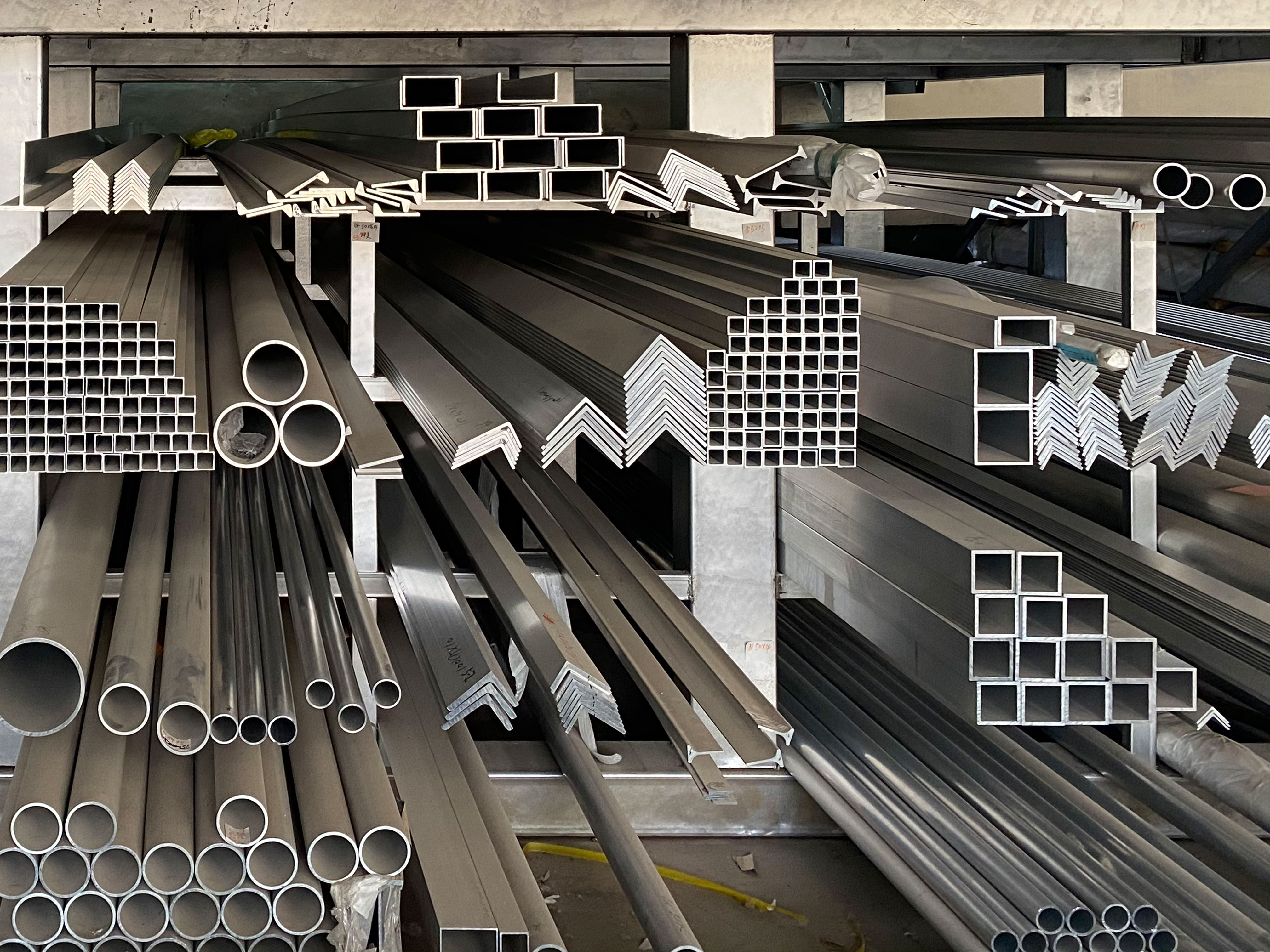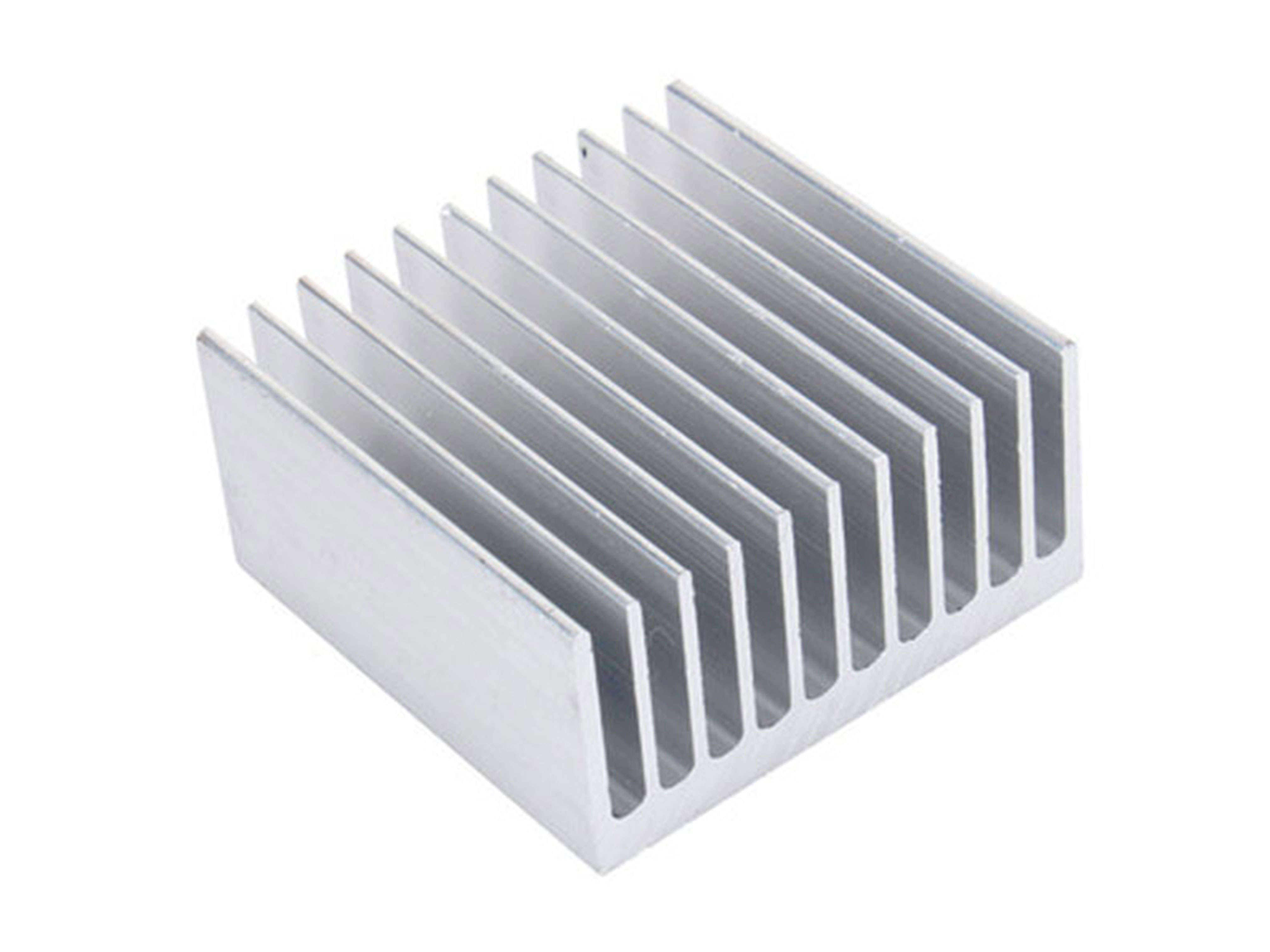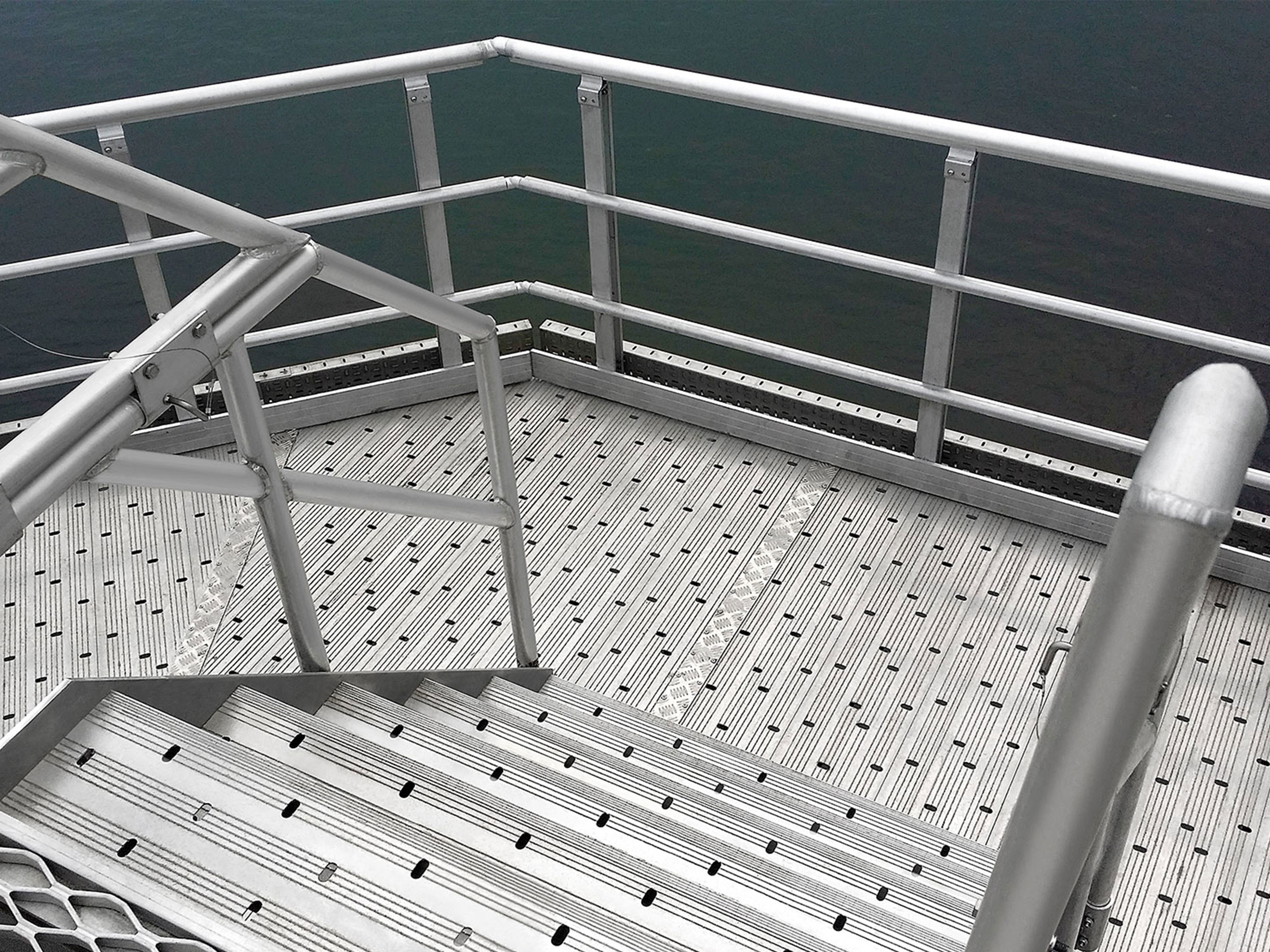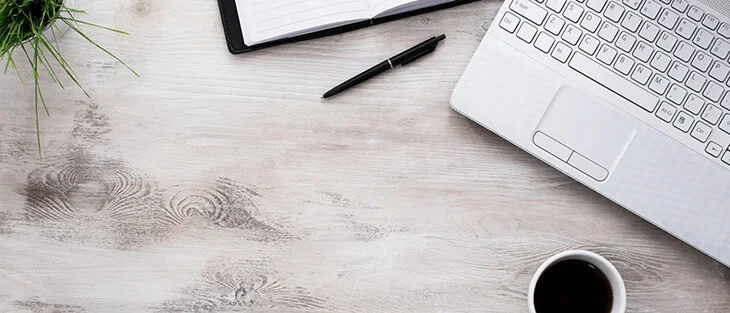6061 Marine Aluminum Fencing and Railings for Custom Offshore Deck and Railings
6061 marine aluminum is a widely used wrought alloy combining good mechanical properties, excellent corrosion resistance in marine environments, and strong weldability. For offshore decking, fencing, and railing systems, 6061 offers a balanced solution where strength, durability, and low weight are key.
Features
- Corrosion resistance: Good natural resistance to seawater and atmospheric corrosion; improved with anodizing or protective coatings.
- Strength-to-weight ratio: Lightweight compared to steel while maintaining sufficient structural strength for typical railing loads.
- Weldability: Excellent weldability using TIG, MIG, and pulsed methods; heat treatment can restore strength after welding when necessary.
- Formability: Can be extruded into complex profiles and bent into curved sections for custom designs.
- Low maintenance: Requires less maintenance than steel (no rust), though inspection and occasional cleaning/coating are recommended.
- Aesthetic flexibility: Can be anodized, powder-coated, or polished for tailored appearance.
- Recyclability: Aluminum is highly recyclable with minimal loss of properties.
Typical Applications
- Offshore platform guardrails and handrails
- Ship and boat railings (deck rails, stanchions)
- Pier and marina fencing
- Walkway balustrades and toe-boards on offshore installations
- Access ladder handrails and safety barriers
- Custom architectural maritime features (gates, privacy screens, panel infills)
Alloy and Temper Options for Marine Use
6061 is commonly supplied in several tempers. For marine railing and fencing, temper selection balances strength and formability.
| Temper | Description | Typical Use in Railings/Fencing |
|---|---|---|
| O | Annealed; maximum formability, lowest strength | Complex forming, severe bending prior to age-hardening |
| T4 | Solution heat-treated and naturally aged | Good for further cold work or welding (minimizes distortion) |
| T6 | Solution heat-treated and artificially aged; peak strength | Structural components requiring highest strength (posts, rails) |
| T651 | T6 with a controlled stress relief (stabilized) | Extrusions where residual stresses must be minimized |
Recommended: Use T6 or T651 for load-bearing posts and rails. Use T4 or O for components requiring heavy forming, then either leave as-is or reheat/age as appropriate.
Chemical Composition (wt %)
Typical composition range for 6061 aluminum (per ASTM B221 / EN standards):
| Element | Si | Fe | Cu | Mn | Mg | Cr | Zn | Ti | Al (balance) |
|---|---|---|---|---|---|---|---|---|---|
| Range (wt%) | 0.4–0.8 | 0.7 max | 0.15–0.4 | 0.15 max | 0.8–1.2 | 0.04–0.35 | 0.25 max | 0.15 max | Balance |
Note: Actual certified mill test reports should be consulted for exact batch composition.
Mechanical Properties (typical values)
Values vary with temper, cross-section and manufacturing process. Shown are typical ranges.
| Property | T6 (typical) | T4 (typical) | O (annealed) |
|---|---|---|---|
| Ultimate tensile strength (MPa) | 310–350 | 240–300 | 110–200 |
| Yield strength (0.2% offset, MPa) | 250–300 | 140–240 | 35–100 |
| Elongation (%) | 8–12 | 10–18 | 20–30 |
| Hardness (Brinell HB) | 95–115 | 75–95 | 30–60 |
| Density (g/cm³) | 2.70 (all tempers) | 2.70 | 2.70 |
Designers should use certified mechanical data from the supplier and apply appropriate safety factors per marine and structural codes.
Physical and Corrosion Performance
- Electrochemical behavior: 6061 is anodic relative to many stainless steels; when dissimilar metals meet, galvanic isolation (e.g., non-conductive gaskets, coatings, or sacrificial anodes) is necessary.
- Pitting and crevice corrosion resistance: Good in natural seawater; chloride exposure can still cause localized attack if coatings fail or crevices trap moisture—design to avoid stagnant crevices and allow drainage.
- Stress corrosion cracking: Less susceptible than some high-strength aluminum alloys, but high residual tensile stresses plus corrosive chloride environment can raise risk. Use stress-relieved tempers (T651) and avoid overaging.
- Protective finishes: Anodizing (clear or colored), conversion coatings (e.g., chromate, non-chromate), and powder coatings significantly enhance weathering and abrasion resistance.
Standard Profiles and Custom Extrusions
6061 extrusions can be produced in a wide variety of profiles suitable for railings and fencing: round/rectangular posts, handrails, mid-rails, pickets, mounting brackets, base plates, and complex decorative sections. Custom extrusions allow integration of channels for fasteners, internal stiffeners, or concealed attachment systems.
Typical extrusion tolerances adhere to ASTM B221; suppliers can provide profile drawings and tolerances.
Fastening, Joining, and Welding
- Welding: Best performed with GTAW (TIG) or GMAW (MIG) using appropriate 4043 or 5356 filler wires. 4043 (Si) produces a lower cracking tendency; 5356 (Mg) gives higher strength and better color match for anodized parts. Post-weld heat treatment may be required to restore full T6 properties — generally impractical for large fabricated rail sections.
- Mechanical fastening: Stainless steel fasteners (316 or 316L) are commonly used; isolate contact surfaces with non-conductive washers or seals to prevent galvanic corrosion. Avoid carbon steel unless fully isolated/coated.
- Adhesives: Structural marine adhesives (epoxy-based) are effective for some assemblies and can reduce through-thickness drilling and fastening.
- Threaded inserts: Helical coil inserts and stainless threaded inserts are used in thin-walled extrusions.
Design Considerations for Offshore Use
- Structural loading: Design to relevant marine and platform codes (e.g., ABS, DNV, IMO, or applicable national standards). Consider live loads, impact loads, and dynamic loads from wave/crew movement.
- Drainage and condensation: Provide drainage holes and avoid closed hollow sections where moisture can accumulate. Vent holes and desiccants can be used during storage/assembly.
- Thermal expansion: Aluminum expands more than steel — design sliding connections and allow for differential expansion in mixed-metal assemblies.
- Galvanic isolation: Use insulating materials (nylon washers, PTFE sleeves) when contacting stainless fasteners or steel structures.
- Anti-slip features: For handrails and toeboards, incorporate textured surfaces, knurls, or welded inserts for better grip and attachment of anti-slip meshes.
Surface Finishes and Aesthetics
- Mill finish: Economical, minimal surface protection—acceptable for some protected locations.
- Anodizing: Enhances corrosion resistance and aesthetics; commonly used for architectural marine applications.
- Powder coating: Wide color options and thicker protective film; ensure proper pre-treatment (etching or chromate conversion) to prevent underfilm corrosion.
- Painting: Use marine-grade coatings and primers compatible with aluminum.
- Brushed/polished finishes: Decorative options for yachts and higher-end vessels; polishing may marginally reduce corrosion resistance and often requires sealing.
Fabrication and Installation Guidelines
- Cutting: Use carbide or PCD tools to avoid burrs; minimize heat during cutting to prevent surface discoloration.
- Machining: Standard machining practices apply; use cutters specifically for aluminum to ensure good surface finish and chip evacuation.
- Bending/forming: Extrusions in O or T4 tempers are easier to form; use appropriate tooling to avoid kinking.
- Protective measures during installation: Keep components dry and protected from prolonged exposure to salt spray during storage; apply temporary coverings if necessary.
- Inspection: Post-installation inspections should check fastener torque, coating integrity, weld quality, and presence of any galvanic contact points.
Standard Specifications and Compliance
Common standards relevant to material and manufacturing:
- ASTM B221 — Aluminum and Aluminum-Alloy Extruded Bars, Rods, Wire, Profiles, and Tubes
- ASTM B209 — Aluminum and Aluminum-Alloy Sheet and Plate
- ASTM B308/B308M — Aluminum-Alloy 6061-T6 Standard Specification for Structural Pipe and Tubing
- ISO 6361, EN 573, EN 755 (regional equivalents) may apply for chemical and mechanical property conformity
Confirm local or project-specific code requirements for offshore installations — regulatory bodies (ABS, DNV, Lloyd’s Register) may impose additional performance or testing criteria.
Maintenance and Life-cycle
- Routine cleaning: Periodic freshwater washdown to remove salt deposits; frequency depends on exposure (daily to monthly).
- Inspections: Visual inspections for coating damage, corrosion spots, loose fasteners, or weld cracking every 6–12 months for offshore installations.
- Repairs: Small scratches and coating damage should be repaired promptly. For localized corrosion, remove affected material, apply corrosion inhibitor and refinish.
- Lifespan: With proper design, materials selection and maintenance, 6061 railing systems can last decades in marine environments. Protective coatings and sacrificial anodes extend service life further.
Sample Technical Specification Table
| Item | Specification/Requirement |
|---|---|
| Alloy | 6061 (Al-Mg-Si system) |
| Preferred tempers | T6 or T651 for structural members; T4/O for formable parts |
| Surface finish options | Mill, anodized, powder coat, paint, polished |
| Fasteners | SS 316/316L with insulating washers |
| Welding filler | 4043 (Si) or 5356 (Mg) per AWS A5.10/A5.10M |
| Max service environment | Marine atmospheres and splash zones (avoid continuous immersion without coating assessment) |
| Design standard references | ASTM B221, DNV/ABS/IMO (as applicable) |
| Typical profile sizes | Posts: 50–150 mm sq/round; Rails: 25–75 mm diam/rect; Custom extrusions per drawing |
Benefits vs Alternatives
- Versus stainless steel: Lighter and easier to machine/form; generally lower material cost but stainless may offer superior surface hardness and longevity in certain high-chloride, high-abrasion settings.
- Versus galvanized steel: Aluminum won’t rust and is lighter, but galvanizing can provide strong, economical corrosion protection for heavy structural uses; galvanic concerns must be addressed when using mixed metals.
- Versus composite/fiber materials: Aluminum provides predictable structural performance, easier repairability, and established fabrication methods.
Ordering and Customization Notes
- Provide complete project drawings with loads, mounting details, and finishes to the supplier.
- Specify temper and mechanical property requirements, weld/heat-treatment constraints, and surface treatment.
- Request mill test certificates (MTC) and, if required, third-party inspection and non-destructive testing (NDT) reports.
Related Products
Marine aluminum fencing and railings
Marine Grade Aluminum Fencing and Railings are fabricated using marine-grade aluminum alloys such as 5083, 5052, and 6061, which are engineered specifically for protection against saltwater corrosion and marine atmospheric conditions.
View DetailsMarine aluminum heat sink profile
Marine Grade Aluminum Heat Sink Profiles utilize alloys such as 6061 and 6063 that not only exhibit high thermal conductivity but also possess excellent corrosion resistance required for saltwater exposure.
View DetailsMarine aluminum customized shapes
Marine Grade Aluminum Customized Shapes encompass a broad range of aluminum extrusions and fabrications engineered beyond standard profiles—such as channels, angles, tubes, and beams—into complex, project-specific geometries.
View DetailsRelated Blog
6061 Marine Aluminum Heat Sink Profile for Custom Boat and Ship Engine Cooling
Explore the superior cooling efficiency of 6061 Marine Aluminum Heat Sink Profiles, engineered for custom boat and ship engines. detailed specifications, temper types, chemical properties, standards compliance, and advanced corrosion resistance features o
View Details6061 Marine Aluminum Customized Shapes for Offshore Engineering Projects
In the fast-evolving world of offshore engineering, the demand for materials that ensure strength, corrosion resistance, and versatility has never been higher. Among various options.
View Details6061 Marine Aluminum Customized Shapes for High Performance Offshore Vessel Design
Explore the advantages of 6061 Marine Aluminum customized shapes engineered for high performance offshore vessel design. detailed specifications, temper conditions, mechanical properties, and corrosion resistance features tailored for marine environments.
View Details6061 Marine Aluminum Customized Shapes for Saltwater Resistant Marine Equipment Design
In the maritime industry, the durability and performance of vessels and related equipment are non-negotiable. Among the numerous materials utilized, 6061 marine aluminum has continually proven to be a premier choice.
View Details6061 Marine Aluminum Fencing and Railings for Custom Offshore Deck and Railings
6061 Marine Aluminum fencing and railings provide a lightweight, corrosion-resistant, high-strength solution for custom offshore decks and railings.
View Details6061 Marine Aluminum Customized Shapes for Lightweight Offshore Platform Design
Explore how 6061 marine aluminum customized shapes offer superior strength, corrosion resistance, and lightweight characteristics essential for innovative offshore platform design, enabling robust and efficient marine structures.
View Details










Leave a Message